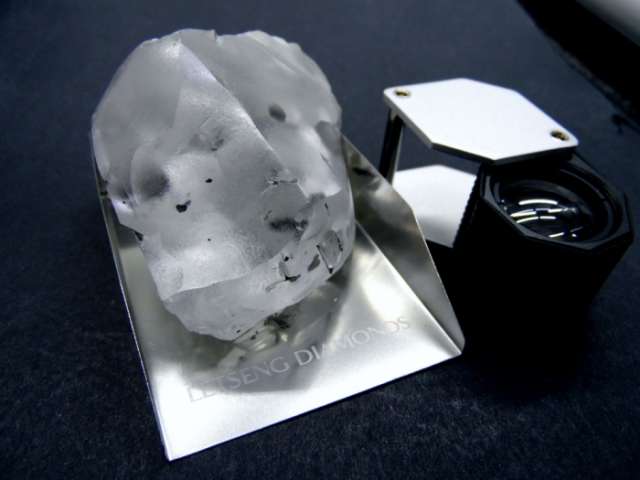The diamonds were found by analysing seismic records - essentially sound waves travelling through the Earth triggered by ground-shaking forces.
Dr Ulrich Faul, a research scientist at MIT, explained that one of diamond's many special properties is the speed at which sound waves travel through the material.
"Diamond in many ways is special," Dr Faul said. "One of its special properties is that the sound velocity in diamond is more than twice as fast as in the dominant mineral in upper mantle rocks, olivine."
Unfortunately for diamond hunters, the minerals are buried more than 160km (100 miles) beneath the Earth's surface - far deeper than any human drills have ever reached.
Dr Faul and his team discovered that sound was moving much faster than it could have been expected to within sections of rock known as cratonic roots.
Cratons are the oldest sections of rock beneath that usually lie beneath continental tectonic plates, and their roots - shaped like inverted mountains - stretch up to 200 miles beneath the Earth's surface.
The new study suggests that up to 2% of these roots may be composed of diamond, which they say would mean there could be about a quadrillion tons (that's 15 zeroes) of diamond scattered up to 150 miles below the surface.
This makes it very unlikely that the diamond could be retrieved with current technology.
The deepest drill ever made by humanity is the Kola Superdeep Borehole in Russia, which took 20 years to reach a depth of 12km (7.5 miles) before being abandoned with the collapse of the Soviet Union.
The research from MIT and other universities published in the journal Geochemistry, Geophysics, Geosystems explains how the scientists reached their conclusion.
Dr Faul explained: "[Cratons] are like pieces of wood, floating on water. Cratons are a tiny bit less dense than their surroundings, so they don't get subducted back into the Earth but stay floating on the surface.
"This is how they preserve the oldest rocks. So we found that you just need 1% to 2% diamond for cratons to be stable and not sink.
Sky news
More about: diamond
















































